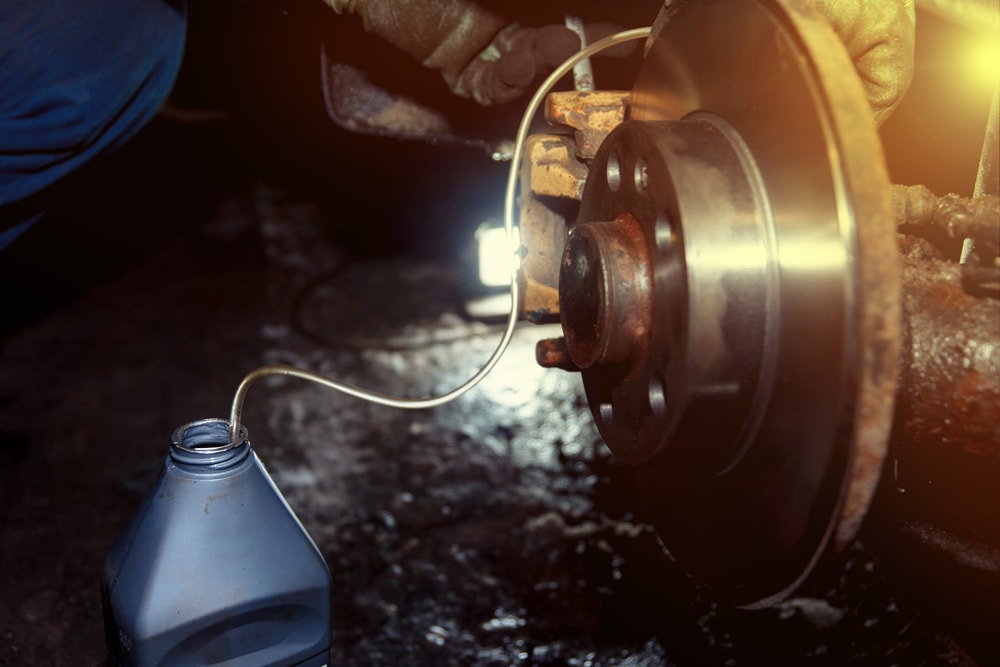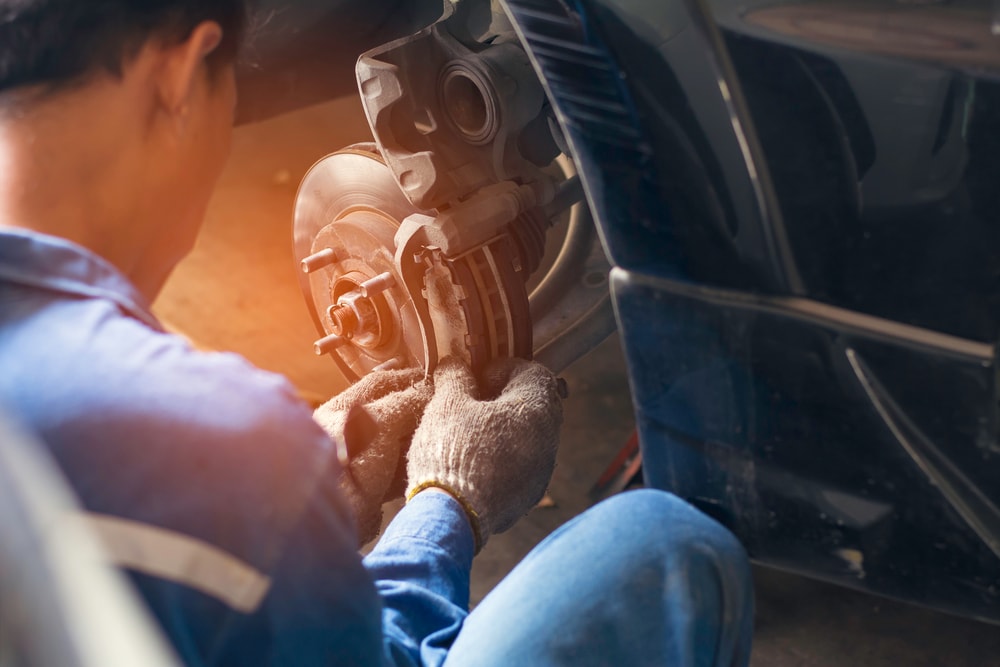Do You Have to Bleed Brakes After Changing Pads? 3 Simple Steps
-
Pete Ortiz
- Last updated:

Fortunately, most brakes serve the vehicle for a long time, and there are a few reasons to inspect them other than when changing brake pads. As a rule of thumb, you should change brake pads once every 15,000 to 20,000 miles and rotors after at least 50,000 miles.
Bleeding is the process of letting out the brake fluid in a hydraulic brake system so there are no air bubbles—and most mechanics will recommend you bleed the brakes after changing pads simply as a good maintenance practice. That said, it is not vital to do so—as long as the hydraulic system isn’t opened and you’re not changing fluid, bleeding is not usually required.
When Should You Bleed Brakes?

The main purpose of bleeding brakes is to let out air bubbles. Normally, the hydraulic fluid in a braking system is an incompressible liquid, but air finds its way to the lines and cylinders through openings. Air enters the system either through piston openings, air trapped when refilling the brake fluid, or after disconnecting lines to change brake pads.
When air is in the system, it makes the brake pedal “spongy” due to the compressible bubbles. If the bubbles are too large, it might be difficult to use the pedal. Thus, it’s essential to do this not only to bleed brakes after changing pads but also after changing the fluid or when the brake pedal feels all unresponsive.
The 4 Methods to Bleed Brakes
Here are some common methods for bleeding brakes:
1. Pump and Hold
In this method, one person pumps the brake pedal and holds it in a pressed position while you open one bleeding screw at a time. Bleed nipples or screws are located at the top of each caliper, and after opening them, air will escape. Just remember to tighten them up before releasing the pedal. Releasing the pedal before tightening the nipple will suck air back into the system resulting in another bubble.
2. Vacuum Pump
A vacuum pump is fixed on the bleeder valve and opened to suck out the fluid and air bubbles.
3. Pressure Method
This is a one-person approach, and it involves attaching a pressure pump to the master cylinder to increase the system’s pressure. You will then need to unscrew each pressure valve one by one until all the air bubbles have escaped.
4. Gravity Method
Though not the most effective, it is the simplest method when replacing brake pads or if you want to change the brake fluid. Simply find one of the bleed screws near the pads and unscrew them to let out the brake fluid. As you drain the cylinders, air bubbles will also come out.
The 3 Steps on How to Bleed Brakes After Changing Pads
1. Locate the bleed valve or nipple
Every brake line has a nipple located on the caliper. Calipers are found on the brake rotors and look like brackets with brake pads on either side. If your car has four rotors, then it has four calipers.
2. Open the valve
Opening the valve will let out air bubbles. However, how you open the valve depends on the bleeding method. You may choose to apply pressure on the brake pedals or use a vacuum pump before opening the valve.
The process should be gradual to avoid spelling the brake fluid all over the garage floor. Additionally, make sure you have a catch pan below the valve.
As a good practice, you should bleed the brakes for between 5 to 10 seconds by loosening the screw by a quarter turn. After that, tighten back the valve while someone is still applying pressure on the brake pedal. Release the pedal or remove the vacuum pump as the last step.

3. Replace or top up the brake fluid
Bleeding reduces the level of fluid in the system. Thus, you should top it up immediately. Start by locating the brake fluid reservoir, which is usually on top of the master cylinder in one of the back corners of the engine compartment. Be cautious of overfilling, as this causes brake drag, overheating, and premature wearing out of the brake pads.
Clean the cap of any dust and untighten it. Pour fresh brake fluid into the reservoir up to the max level mark and tightly secure the cap back.
FAQ
Should You Bleed All Brake Pads After Changing Only One?
It is not a must to bleed all brake pads after changing just one. But it is recommended not to change a single brake pad at a time. Instead, do it in pairs. Changing brake pads in pairs or all of them at once improve how the car responds to braking. If you do it for one wheel, the older brake pad will not be as effective as the new one.
What Happens if You Don’t Bleed the Brakes After Changing Pads?
There is little chance not bleeding brakes after changing pads will result in air being sucked into the system. This is because modern brakes are designed in a manner that simplifies changing pads, and the process will not interfere with brake fluid lines and bleed valves at all.
In simple terms, changing brake pads is unrelated to bleeding, but mechanics usually combine the two to ensure the brakes are operating optimally.
Conclusion
It is not necessary to bleed the brake fluid after changing brake pads, but most experts recommend it for good maintenance. Generally, you should bleed brakes when the pedal feels spongy due to air bubbles in the system or after detecting a leak. Since changing brake pads does not disturb brake fluid lines in any way, you should not introduce any air into the system just from a simple pad replacement.
Featured Image Credit: Velimir Zeland, Shutterstock
Contents



